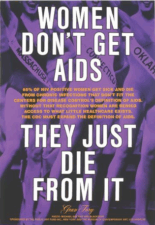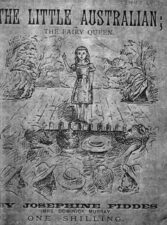Gill Rossini
In July 1928, author Radclyffe Hall published her now iconic novel The Well of Loneliness. It was a brave, some said foolhardy attempt to sway public opinion in favour of a sympathetic attitude towards homosexuality in Britain and beyond. The viciously homophobic editorial in the Sunday Express which ultimately led to the banning of the book for obscenity is well documented; Hall’s outburst in court, her flamboyant appearance, the press of largely female fans coming forward to support her and even kiss her hand at the doors of the court, and the devoted presence of Hall’s “wife”, Una Troubridge, are also well known. The Well of Loneliness is not the book which made Hall’s reputation as a writer, but it did make her more widely known as an overtly masculine lesbian who demanded acceptance for herself and fellow homosexuals as people who were born, not made. It gave her a form of celebrity status as a queer martyr (a role she assumed with enthusiasm) which ran alongside her popularity as a mainstream author, and Hall and Troubridge revelled in the public example their devoted partnership set as a model for lifelong same sex fidelity.

Photo: Wikimedia Commons
However, there is a large part of the “celebrity” persona that was Radclyffe Hall that was a construct in a very modern sense of the word, created by her own ego, and her partners Mabel Batten (“Ladye”) and Troubridge in turn. It was not a role which always sat lightly with her, and in some ways it ran counter to her essential character.
Prior to meeting her first long term partner, Mabel Batten (“ Ladye”) in 1907, Hall was a rich young woman of dysfunctional family background who was wandering aimlessly from one affair to another; having inherited a fortune, she had no impetus to make a career for herself – nor was she expected to. She was rather boorish, arrogant, brave, passionate, restless and adventurous, any intellectual pursuit hampered by a poor education compounded by what is now thought to be unaddressed dyslexia. She could be generous and dutiful, as her lifelong support of the mother who hated her showed. She was autocratic and bullying with her servants, even for the times, but could be extravagantly indulged herself and those she loved. This “unreconstructed” Hall took little active interest in politics or religion, although she did dabble in the arts by writing some amateurish poetry. She had a series of affairs with other young woman prior to meeting Batten and at no point attributed her sexuality to anything other than an accident of birth; in that sense, once past the angst of youth, she was always at ease with her lesbianism.

Photo: Wikimedia Commons
Fifty- one year old Batten saw potential in her much younger lover, and with all the indulgent devotion she had, began to encourage Hall to do something constructive with her life. She persuaded Hall to take her writing more seriously and submit it to publishers, and encouraged her to convert to the Roman Catholic faith. Under Ladye’s stylish tuition, Hall’s appearance became more overtly masculine, but within the bounds of convention – she mostly wore skirts all her life and only had her waist length blonde hair cut at the age of forty. She brought Hall focus, a circle of acquaintance, and a stable domestic life. Hall brought her youth, vitality, excitement and challenges. There is little doubt that Hall readily accepted this form of gentle grooming; as Dellamora states, she happily colluded in aspects of her metamorphosis.
This domestic arrangement continued smoothly until 1915, when Hall met twenty-eight year old Una Troubridge, Lady’s cousin. Troubridge pursued Hall with no regard for her cousin’s feelings and Hall was only too glad to have a youthful distraction from her middle aged and ailing partner. What began for Hall as a sexual adventure was to become the most significant long term partnership of her life, ending only with Hall’s death in 1943.
It is Troubridge that we have to thank for the finer examples of Hall’s writing, and for The Well of Loneliness. It was she who devotedly read through Hall’s daily output, offered editorial advice and acted as the sort of indispensable personal assistant that an executive comes to rely on to deal with the outside world. In turn, Troubridge demanded, and received, loyalty, generosity and devotion, as far as Hall was able to give it. There is clearly a pattern here; Hall may have prided herself on being a natural born homosexual, but her public persona was a product of the vision of two women for whom she liked to think she was the stronger partner, but in fact was a canvas on which these intelligent, resourceful lovers painted an artist, writer, and noble sexually inverted martyr. What is sad is that in doing so, both Ladye and Troubridge became victims, not of their own success, but of their ambition; in attempting to control Hall with the strait jacket of their own vision and expectations, they caused her to rebel and retreat to a more authentic and less demanding self image. With Ladye, that meant an affair with a younger woman (Troubridge) as an escape from domesticity and a life as a care giver to a semi invalid; with Troubridge, it meant an escape from the urbane, cultured, nit picking claustrophobia of an author’s life into an affair in 1934 with a gauche, unfinished émigré (Evgenia Souline) who in the early days made few demands and was easy to dominate. With Souline, Hall could lose herself in raw desire and sexual passion and forget editing, plotting, literary dinners, and the omnipresent Troubridge, who in turns manipulated Hall as a writer, and who by the mid 1930’s also frustrated her as a cloying semi invalid who both demanded and relished Hall’s care.
There is something vividly adolescent about Hall with her tantrums, passionate attachments, obsessions and rebellions; it is never desirable to try to control or dominate a teenager of any age, and therein lies the mistake of her partners. However softly spoken the admonitions of her women, however insidious the grooming, eventually Hall rebelled, and this usually took the form of sexual infidelity. This sexual passion and emotional obsession is revealed to us in her letters to Souline, the mistress who was the third point of the destructive love triangle that nearly ruined all three women. That could be tolerated – if Hall was perceived as the “man” of the house, the conventions of the day implied that it had to be. The danger came when Hall actually fell in love with one of her indiscretions, and threatened the marriages that Ladye and Troubridge had striven to create. Hall was gloriously, outrageously, infuriatingly at her best when allowed to be herself, but then left to her own devices, we would never have had The Well of Loneliness.

References
Dellamora, Richard: Radclyffe Hall: a Life in the Writing. Pennsylvania: University of Pennsylvania Press, 2011
Glasgow, Joanne (ed): Your John: the love letters of Radclyffe Hall. New York: New York University Press, 1997
Souhami, Diana: The Trials of Radclyffe Hall. London: Virago Press, 1999
Gill Rossini is a writer and lecturer, specialising in the histories of minority or disadvantaged groups in society. She is currently working on a history of same sex relationships in England and Wales 1750-1957, to be published in 2017.
Website: www.gillrossini.com


